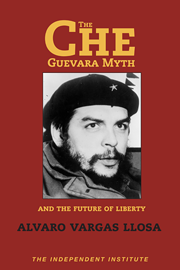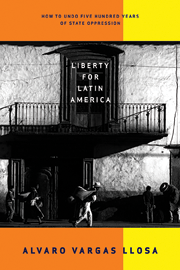A “New Deal” is in the makings in Latin America. The President of Brazil, Luiz Inacio “Lula” da Silva, and the President of Argentina, Néstor Kirchner, are its two symbols. This Latin American “New Deal” is a direct response to left-wing “populism” and right-wing “neoliberalism”. It purports to go beyond the policies of fiscal and monetary profligacy that caused hyperinflation in the 1980s, and beyond the policies of crony-privatization and proto-liberalization that caused unemployment and high debt in the 1990s.
Argentina defaulted on its debt less than two years ago and poverty engulfed 60 percent of its population. In Brazil, default was barely avoided but the currency lost a third of its value.
What does this Latin American “New Deal” consist of? It maintains that the Government should promote growth through public spending without causing inflation and incurring new debt, and protect the economy from globalization by using regional block-negotiating power rather than high tariffs. President Kirchner has invoked Roosevelt’s “New Deal” as a paradigm for Latin America and promised a momentous program of public works. Both Brazil and Argentina have recently decided to revitalize Mercosur, a South American block of trading partners, with a view to constructivist, European Union-style integration.
Is the Latin American “New Deal” viable?
In trying to steer a middle course between the inflationary 80s and the privatizing 90s, they fail to see that both experiences were variants of the same evil. In the 80s, the State, a producer of goods and services, used a suffocating tangle of compulsion mechanisms, including currency manipulation, to coerce citizens into sustaining what writer Octavio paz called the Philanthropic Ogre; in the 90s, the State, having transferred much production to private enterprise, used a suffocating tangle of compulsion mechanisms, excluding inflation, to coerce citizens into sustaining a coterie of monopolies that, in exchange for exclusive rights, supported the Philanthropic Ogre through credit and some taxes. The result at the end of the 80s was hyperinflation and stagnation. The result at the end of the 90s was—well, default and stagnation.
Latin “New Dealers” assume, mistakenly, that the “New Deal” saved U.S. capitalism. In fact, it hurt private investment and employment, and postponed recovery. According to economists Harold L. Cole and Lee E. Ohanian, employment should have been back to normal levels by 1936 and wages by 1939. But, in real life, by 1939 unemployment was still very high and real output was 25 percent below trend. Economist Robert Higgs argues that the damage done to property rights retarded long-term investment until 1941.
Even as early as 1938, Garet Garret, one of the salient writers who blasted the drift of American politics toward statism at home and empire abroad, wrote in the Saturday Evening Post that at the height of 1937 production in the U.S. was still below 1928 levels in per capita terms.
The New Deal took the size of government to an extreme—roughly one third of GDP—from which it never turned back. In the words of Sheldon Richman, “the New Deal actually was a defense of the corporatist status quo threatened by the Great Depression.”
Latin Americans are missing the point about underdevelopment. In both Brazil and Argentina the government expropriates a large share of the wealth of their citizens and, through institutional privilege, hinders society from producing more. The government devours 40 percent of GDP in Brazil and 39 percent in Argentina (including federal and state level, and debt payments; Argentina has ceased to service the debt but will resume payments after negotiations with the IMF are completed). A system based on privilege keeps 40 percent of wage earners outside of the legal economy in Argentina, and Brazil has more people in the informal economy than the combined number of public sector and formal industry employees! It takes a quarter of a year simply to incorporate a start-up business in both countries.
Lula and Kirchner are addressing symptoms, not causes. President Lula is capping and taxing monthly pensions as well as increasing the retirement age, so that the fiscal situation does not get out of hand. He is also encouraging the Central Bank to keep interest rates high so that inflation, still in double digits, does not run amok. The rest has to do with using the State government programs and agencies to fight unemployment and poverty.
In Argentina, the surplus created by stopping debt servicing and the growth generated by exports due to currency devaluation (and consumption of capital) has given President Kirchner the confidence to announce a big public works program worth close to $3 billion.
Through Mercosur, both countries aim to reproduce at the regional level the kind of State prevailing at the national level.
The logic of their actions points to failure. They want to avoid the problems of the 80s and those of the 90s, so they will not inflate and they will not run into more debt. What is left? Taxes. And when more taxes fail to sustain even more government spending, and even more government spending fails to sustain growth, what will happen?












